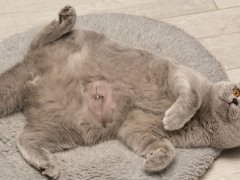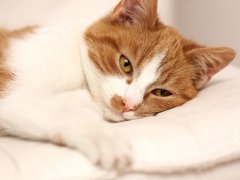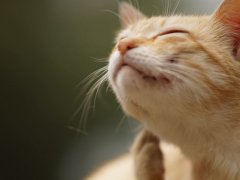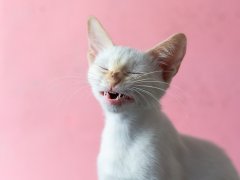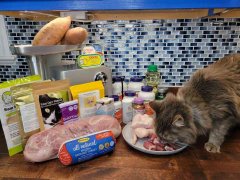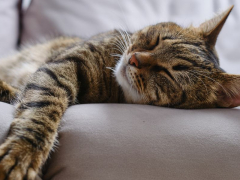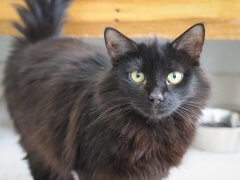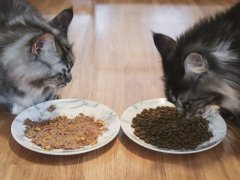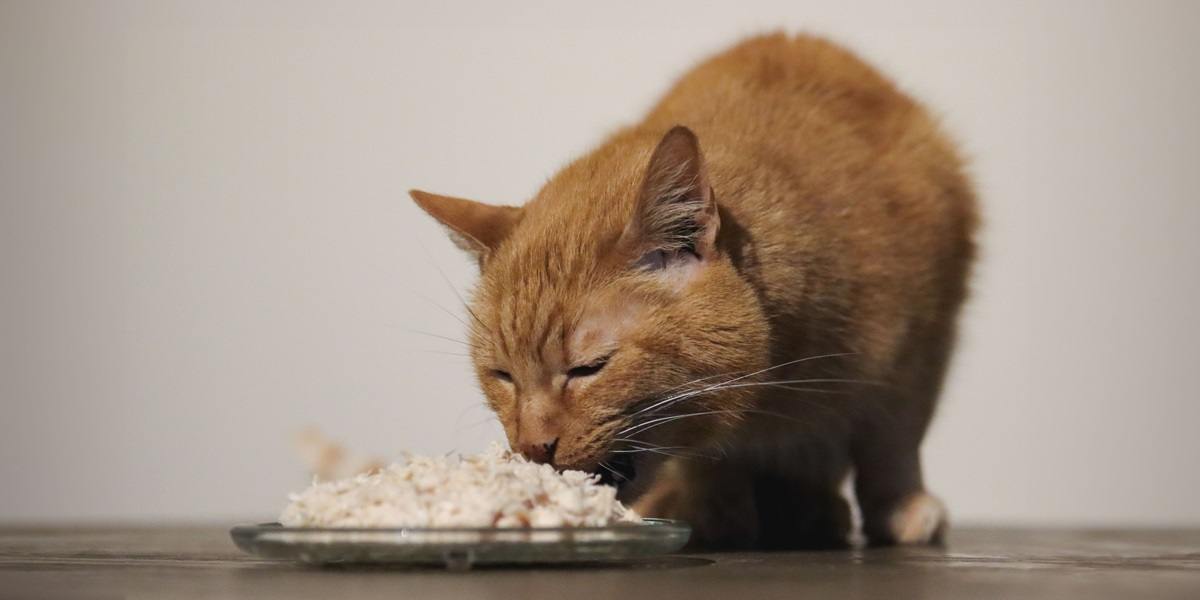
Kirsten McCarthy / Cats.com
Some people may think cats can eat any old pet food or table scraps, but loving owners know this is not the case. And it’s not because cats are picky eaters. (Okay—it’s not only because cats are picky eaters.) Adverse food reactions in cats are surprisingly common.
There are generally two types of adverse food reactions in cats. A food allergy refers to when a cat’s immune system reacts to an allergen. Food intolerance is a more general term to describe a large spectrum of food-related reactions that don’t involve the immune system and are often more digestive in nature.
Food intolerances are usually managed with elimination trials and careful food selection. It can be difficult to pinpoint your cat’s specific dietary triggers, so learning what to look for is key to helping them.
5 Common Symptoms of Food Intolerance in Cats
All cats will experience some digestive upset in their lives, but recurrent problems indicate an underlying problem, such as a food intolerance. If your cat seems to have an unusual amount of gastrointestinal problems, always seek advice from a veterinarian.
Here are some of the common signs of food intolerance.
1. Frequent Vomiting
Cats vomiting is a sign that something has upset their digestive system. Infrequent regurgitation could be a minor reaction to a dietary indiscretion or even just eating too quickly. However, regular and repeated vomiting episodes are not normal. This may be your first indication of a food intolerance and it’s worth investigating further.
2. Chronic Diarrhea
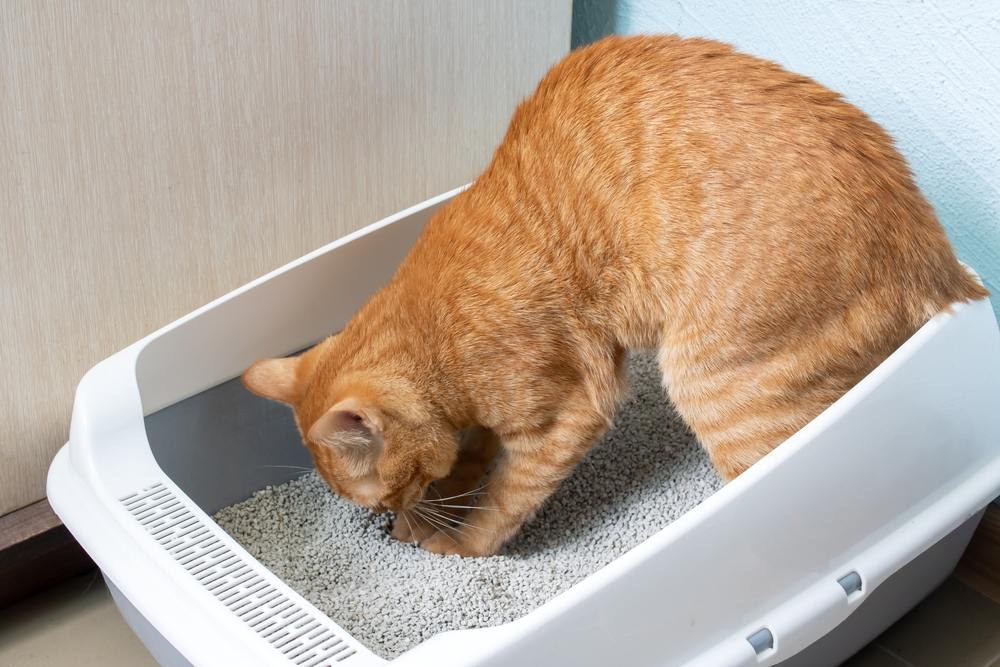
Frequent trips to the litter box to pass diarrhea can be a sign of a food intolerance. Vera Aksionara / Shutterstock.com
Cats having diarrhea is a common reason for a trip to the local veterinarian. Loose stools can be caused by a multitude of factors, including infections, parasites, metabolic disease, and dietary conditions. A solitary episode of a loose or watery stool is not usually a concern, but as with the vomiting, chronic or regular diarrhea is a big problem.
3. Noticeable Flatulence
All mammals endure a certain amount of gas in their intestinal tract. This excess gas can emerge as flatulence in cats and is perfectly normal. You may be wondering if you’ve ever really seen a cat pass gas. That’s because it’s not really noticeable. However, excessive gas build-up causing regular and noticeable flatulence indicates a potential digestive problem.
4. Weight Loss
If your cat is intolerant to certain foods, those foods cannot be digested properly. This leads to your cat’s body receiving fewer nutrients and will result in poor overall health. A cat with a nutrient deficiency may experience slowed growth, weight loss, declining body score condition, or a reduction in lean muscle mass.
5. Increased Lethargy
Cats with a food intolerance cannot gain the optimal amount of energy from that food due to a lack of proper digestion. They will feel under the weather due to their constant digestive problems. Cats with food intolerances may therefore be quieter than their peers—not keen to play or interact, sleep excessively, and may spend more time hiding.
Starting an Elimination Diet
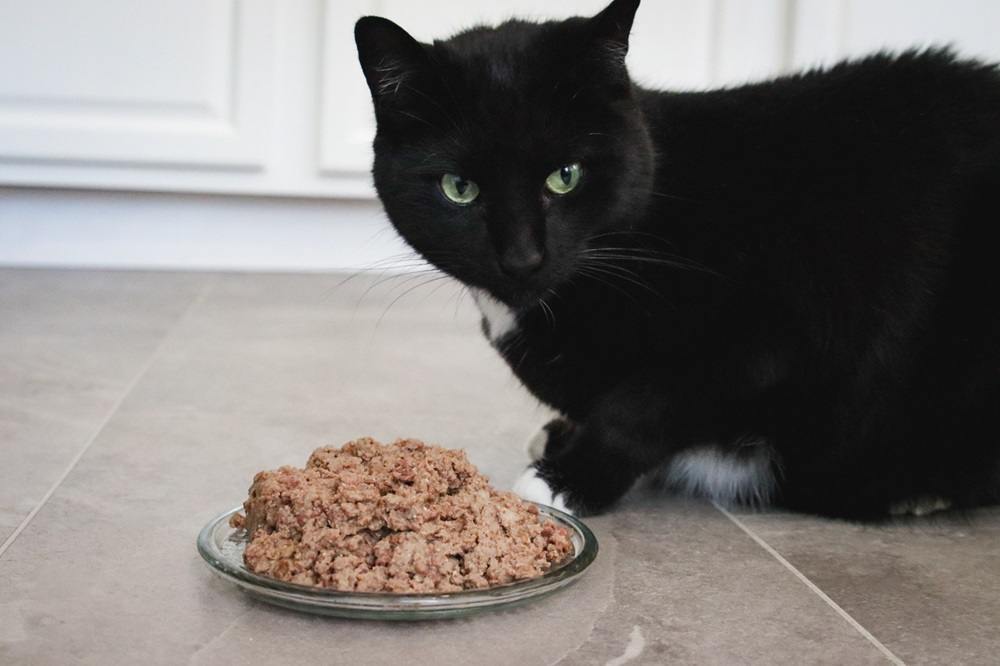
Kirsten McCarthy / Cats.com
Food intolerances are incurable and often life-long, so consult your veterinarian to help you find a long-term solution. Your vet may recommend blood tests, ultrasounds, or other tests to rule out things like infections or cancer.
Dr Emma Passman, DVM, says “Understanding the difference between food allergies and intolerances, as well as recognizing the key symptoms like vomiting, diarrhea, and weight loss, is crucial for identifying the issue early on. With elimination diets and novel protein sources, we can often pinpoint the dietary triggers and provide cats with the correct nutrition to aid symptoms. Patience and persistence are key when managing food intolerances, and with the right plan, most cats can thrive on the right diet.”
Dietary triggers usually revolve around the protein source for cats—beef, chicken, and fish are the most common. Begin with changing their food to one with a protein source they have not tried before, such as venison, lamb, or rabbit. Choosing a cat food with a single protein source usually makes it easier to narrow things down.
Recent studies have shown that dietary trials for cats need to be continued for several weeks. For cats placed on a novel protein diet, 80% of them showed significant improvement after six weeks. After eight weeks, 90% of the cats showed significant improvement.
I remind cat owners to be strict, persevere, and monitor closely. Only feed the novel-protein diet. No treats, no tidbits, no chews. Improvement may take several weeks, so keep it up! If your cat has had digestive issues for a while, it can be hard to judge the changes. Keeping a symptom diary can be really useful.
Other Possible Solutions
Perhaps you have tried multiple diets with no success, or you don’t know your cat’s dietary history. If a novel protein diet isn’t suitable, there are a couple of other options for you to try with your cat.
Hydrolyzed Protein Diet
Hydrolyzed diets—also known as hypoallergenic diets—are made specifically for pets with allergies. They are made by breaking down the protein molecules into peptide fragments, which are very unlikely to provoke the body’s defenses.
It’s important to note that many commercial pet food companies use “hypoallergenic” as a marketing term for certain diets. However, many of these diets don’t really contain a hydrolyzed protein source and are not truly hypoallergenic. Always check the label and get advice from your veterinarian.
Homemade Diet
A third option for providing a novel diet for your cat is to trial a homemade diet. This must be done with extreme care and under the supervision of a qualified nutritionist or veterinarian. It is essential to select a well-rounded balance of nutrients suitable for your cat.
Next Steps and Maintenance
If your cat has undergone a rigorous dietary trial with no success, the first step is to repeat the trial with something different. Try a new protein or a hydrolyzed diet. If this also fails, request further diagnostic testing with your veterinarian, such as biopsies of the gastrointestinal tract.
If the trial is successful, you will have identified a diet that suits your cat, reduces their symptoms, and provides complete and balanced nutrition. Congratulations! You can stick with this diet for as long as it continues to work well for you and your cat.
Another option is to gradually reintroduce foods one at a time to learn which ingredients are safe for your cat. Take this very slowly to avoid overloading your cat’s digestive system. Either way, remain vigilant for symptoms of digestive upset. The comfort of our pets is always worth it.
-
Jackson, H. A. (2023). Food allergy in dogs and cats; current perspectives on aetiology, diagnosis, and management. Journal of the American Veterinary Medical Association, 1–7. https://doi.org/10.2460/javma.22.12.0548
